It was eight years ago that I shifted back to my hometown, Patna. I had given up my corporate career over an epiphany involving the Buddha, travelled thousands of miles to study ancient Indian art, and then settled back at home and hearth. Except for a one-year stint in Hyderbad, I’ve mostly been here, devoting
It was eight years ago that I shifted back to my hometown, Patna. I had given up my
corporate career over an epiphany involving the Buddha, travelled thousands of miles to
study ancient Indian art, and then settled back at home and hearth. Except for a one-year
stint in Hyderbad, I’ve mostly been here, devoting my time to studying ancient traditions,
their art and philosophic expressions. What began as an intellectual curiosity has now
morphed into a quest for meaning, a search for a course of action, a path for further
movement. Patna has been a witness and a masterful co-conspirator in my quest. In its
people and places, temples and bylanes , ruins and bazaars , I’ve found spontaneous
inspiration, a reflective effervescence . The city, simmering with the idea of its glorious past,
bumbling along in the present in a globalized, connected world has been the perfect
backdrop to deeply understand myself and to align myself to what truly matters, a foil for
my explorations and introspections. Its languid pace was just what I needed to delve deep
into the far reaches of antiquity, to the limpid pools of its wisdom traditions. Through its
own illustrious history, I found the footholds to reach the pristine clarity of the past. To
finally decipher what it meant to have a human life, and what purpose it holds.
I present here a patchwork of my memories, of the places, people and moments which have
cemented or recaliberated my own ideas and notions, which have provided me the impetus
to travel further in my seeking.
Circa 2016, in the sweltering June heat, I was seated in a packed pandal listening intently to
Morari Bapu, the revered saint and kathakar who had graced the city after 20 years. I
scribbled notes as he spoke, especially when he mentioned Lord Siva, such was my one
pointed focus on the God then. At a point in his discourse bapu said that to get to Saraswati
one must propitiate Hanuman and if one needed Saraswati for the boon of speech then one
must reach her through Kali. It was just the advice that I needed. In an attempt to re-enter
the corporate world I had been interviewing for months. Success eluded me due to a long
gap on my resume, and my absolute inability to engage in corporate talk. I desperately
needed Saraswati, and Kali was my go-to goddess. The combination clicked, and that
explains the Hyderabad stay in between.
There was something else that Morari bapu said, which resonates now. “Purusharth is
successful only if it leads to Ram, dharma only if it leads to Ram, artha only if it reveals
Ram”. This makes imminent sense now as I spend time mulling over and attempting to
practice the Bhakti mishrit Karmayoga proposed in the Bhagvad Gita . The one goal
stipulated in our scriptures is that of Bhagwad Prapti (God realization), every action ought be
God centric. I’ve spent the pandemic attempting to dedicate all actions to God, even the
mundane, even the absolutely abysmally prosaic. The hope is to shed the limiting
constraints of the ego and to perceive and receive everything as emanating out of the far
reaching energy of the supreme consciousness.
Soon after I arrived in Patna, I went all out to locate a Jain temple at Kamaldah. I had only
vaguely heard about it and was compelled by a pressing desire to see it, apparently it was
linked to Chandragupta Maurya, the founder of the Mauryan dynasty. All things Mauryan
were an obsession back then. The search led to me a Jain temple in Patna city, where I was
eagerly surrounded by the management committee who were especially pleased to find
someone interested in the Kamaldah temple. I was promptly served some cold drink,
followed by an enthusiastic and hopeful request “madam can you help in getting the
approach road constructed at Kamaldah?”, I must have seemed like some important
personage to be posed that query. I nodded my head with total conviction that it would be
easily done and I would enable it. More than a decade in the corporate world had tuned me
to take on the impossible and this seemed an easy task to my supercilious overconfidence. I
learnt there, that the temple I sought was dedicated to Stulibhadra.
An internet search revealed a Herman Hesse-esque story . Stulibhadra was the son of a
minister in Dhanananda’s court (the last Nanda ruler overthrown by Chandragupta
Maurya). He fell in love with a courtesan and lived in with her. After his father’s sudden
demise, he renounced the world and became a monk . He stress-tested his austerities by
staying the rainy season at the home of his former lover, averting her advances and finally
converting her into a lay follower. He was the founder of the Shvetambara sect, and the first
Jain council at Pataliputra was held under his auspices.
Stulibhadra is a revered figure in Jain tradition . The temple near gulzarbagh, next to a pond,
which once was full of lotus flowers (hence the name kamaldah) sits over a mound. Up a
flight of stairs at one end of a terrace is a small squat white temple with a dome. In the
sanctum, a stark sculpted footprint along with an inscription is venerated, a vermillion dot
indicates it had been freshly propitiated. The caretaker informed me that in the absence of
official help, the Jain community has collected donations to refurbish the temple. The
staircase being freshly tiled with marble. He tells me that the temple only gets stray visitors,
except for a day of annual procession where devotees from around the world flock here.
One of Stulibhdra’s preceptors was Bhadrabahu, the famed Jain guru with whom the first
Mauryan emperor Chandragupta Maurya travelled south from Pataliputra to Karnataka
after abdicating the throne following a 12 year famine. Chandragupta lived as an ascetic at
Shravanbalegola, eventually committing Sallekhana (ritual fast to death)
Looking back, the solitary temple seems packed with the symbolic. It represents
transcendence over the trammels of flesh, a search for wisdom and truth, a timeless tale of
the victory of the human spirit. In its stillness is woven integral strands of history and
legend that define this city. In the quietening of his desires, in his prodigious knowledge of
his faith, the holy monk leaves me with a lofty template to follow.
Back then, Lord Siva hogged my mind-space, Devi seemed a part player in his mythology
but did not interest me much. I was all too happy reading up on the Great God, and later,
emulating my mother, devoting myself to spiritual practices. Although I had visited the two
Patan Devi temples at Navratri, I hadn’t been inclined to know more, especially since the
temples seemed of no great antiquity. It was only later, after I woke up to Devi, that I
discovered that the Badi Patan Devi is one of the 51 Sakti Peethas- the sacralized spot where
the right thigh of Sati fell. Though I haven’t visited the Goddess after this belated realization
I remember one of my earlier visits when I was accompanied by my cousin and sister-in-
law. To my amusement my cousin addressed the latter as “dulhin” (bride) an appellation I
had only heard elders using. It seemed so far removed from my hard-driving entrepreneur
cousin whose lexicon was mostly about profits or expansion plans. A devout Devi bhakta,
his donations had helped cover one of the floors of the temple in marble. As he took us
around and showed us the outcome of his generosity, I was reminded of the donor
inscriptions of Bharhut and Sanchi stupas, and the copper plate inscriptions of many an
ancient temple harking back to an age-old tradition where donations from lay followers
helped construct religious edifices. A bolt shot through my spine as I saw the continuous
threads of our traditions alive, throbbing, streaming through countless unseen threads into
the living present.
At Badi Patan Devi , the goddess is venerated as a triad- Mahalakshmi, Mahasaraswati and
Mahakali. I remember being mesmerized by their gorgeous images. Recently, a friend
remarked that Devi’s pictures always drew one in. I was reminded of the references to the
goddess as Bindu and Siva as Nada, “the entire universe consisting of the movable and the
immovable is of the nature of Bindu and Nada.Together they support the vast universe” . I
imagined the goddess as pulsating energy, a dynamic centrifuge, a “drapsa”, drop out of
which emanates this entire cosmos. I saw her then pervading the human form in spinning
chakras of consciousness, lying coiled waiting to be united with Siva in a thousand petalled
communion. She is a force to be reckoned with and magnetism is just one of them!
A must visit place, if one is on a history trail is Agam Kuan (the fathomless well). My first
pitstop at the site was the Sitala Mata mandir, the folk goddess who cures pox. I only dimly
remember the goddess but vividly remember the pindas of the Saptramatrikas in the temple.
I had encountered the matrikas at museums and was familiar with their iconography.
Women jostled around to place their offerings on the mound shaped goddesses and I was
happy to have seen the them in an amorphous avatar.
The well at the site has many interesting associations. The Mahavamsa and Dipavamsa of Sri
Lanka attest that the Mauryan emperor Asoka decimated 99 of his brothers in this bid to
claim the throne. Legend has it that he had them thrown in the very same well. Some
sources claim that the well marks the location of his “hell” the elaborate torture precincts
that he had built where innocent people were sadistically tormented. It is said that the hell
had an especially entrancing exterior to lure in unsuspecting victims who were then tortured
by its psychopathic chief executioner Girika. Both Fahien and Xuanzang , the Chinese
travellers to India mention their visits to the site of this putative hell.
Pataliputra’s importance grew in the time of the Buddha when Ajatsatru , the emperor of
Haryanka dynasty had fortifications built here. His son Udayin shifted the imperial capital
from Rajgriha to Pataliputra.
Hot on the tracks of the ancient, on a chilly winter day my sister, niece and I headed to the
much talked about Bihar museum. After the security check, we landed up in the children’s
gallery which was jam packed with visitors busy clicking selfies. I hastened to guide us out
of there as I was more interested in the ancient artefacts. My niece was aware of my
intentions, she is privy to my love for ancient art.
I had been a bit disappointed on my earlier visit and things hadn’t changed much. While
some of the displays are impressive, a more inspired curatorial effort could have made the
experience more enriching. With fifty thousand objects in its reserves, one wouldn’t expect
damaged artefacts to grace the galleries. Too much empty space defocuses from the art, even
the iconic and utterly gorgeous Didarganj Yakshi seems forlorn in a sparse room she shares
with the matrikas. However, I shrugged off the imperfections and soaked in the sculptures-
from the Bodhisattvas and Taras to the perfectly proportioned bronzes.
We ambled along the corridors, and outside in the courtyard loomed the gigantic Subodh
Gupta installation made with his trademark steel utensils, this one interlaced with
enamelled colour. Titled yantra, it is a captivating sight harking back to the ritual geometric
drawings that sadhakas peg their meditation on to awaken higher powers. Geometry
contains the uncontainable, it “holds in its stillness and flow the full and whole knowledge
of this manifested Cosmos, and its unmanifested state”. Representing an ancient mystical
design, Gupta’s yantra symbolizes the past and spells it out in a dazzling contemporariness.
I wondered if I would be so drawn to it, if it didn’t have the connotations that it did – Siva
and Sakti, existence and expression, the yin and the yang. At the museum eatery, all such
ruminations ended over the searing spiciness of ‘patakha’ french fries, delectable kebabs and
masala maggi.
Important Mauryan era remains have been unearthed at Kumhrar but they now lie
inundated in water. A makeshift room has some pictures of the original excavations with
which one is supposed to satisfy oneself. I’ve asked a museum director, and the head of a
research institute why the site is in such apathetic neglect but haven’t had any convincing
answers. Kumhrar’s gardens remain a favourite with young couples affording them a tryst
away from prying eyes. There are remains of a hospice and a broken pillar in its precincts
that most visitors remain indifferent to. The city mills outside, its gnarling, noisy traffic
rumbling past, oblivious to the treasures that lie buried, the greatness of its past, a forgotten
memory.
Asoka is personal. Twelve years ago, he entered my life, radically transforming it. His own
life is a story of evolution, of transcending base nature and reaching exalted ground. I had
been busy looking to the west for inspiration, seeking the heroic, looking for paradigmatic
role models. He just made a quiet entry, and through the unravelling of his life’s journey
connected me to the great antiquity of India, introducing me to the Buddha and cementing
me deeply to my own faith.
Brutal to start with, and in my estimation extremely insecure, when rebuffed by women in
his harem for his unsightly appearance he had 500 of them burnt alive. The Buddhist texts
speak of many such acts of viciousness earning him the epithet of Chanda-Asoka (Asoka the
Cruel). These texts speak of an organic reformation, however his personal edicts carved on
rock faces and stone pillars speak of the ravages of war effecting a change of heart.
An expansionist campaign against Kalinga and the post war horrors racked him with
remorse, he vowed to give up warfare, committing his life to the propagation of Dhamma.
One of his edicts poignantly proclaim the pressing concerns of Dhamma-Asoka (Asoka the
righteous) “All men are my children. What I desire for my own children, and I desire their
welfare and happiness both in this world and the next, that I desire for all men”. His efforts
though went beyond and spanned all sentient beings. Though an avowed Buddhist, his
actions reveal his omnistic views. An edict proclaims “ a promotion of essentials of all sects
should take place”, calling for a furtherance and tolerance of all faiths. Not one to place his
own creed in primacy he is known to have endowed rock cut caves to the Ajivikas, a sect
that even the Buddha condemned as “pernicious for maintaining that all human effort is
ineffective”.
Asoka calls for good deed, mercy, charity, truthfulness, gentleness, virtue and purity. Since
the pandemic enforced lockdown, I’ve doubled my efforts reading the Gita and I find the
emperor’s thoughts mirroring those of Lord Krsna. “Sarvabhutehite Ratah” exorts the Lord ,
work for the welfare of all beings, precisely what Asoka dedicated his life force towards .
Lord Krsna speaks of the “Vishudhatama” karmayogi, the karmyogi with pureness of heart,
he calls for gentleness, virtue, truthfulness, compassion, generosity, non-violence echoing
the words of the emperor. From the depths of our archaic tradition come these voices of
eternal wisdom, they speak of values that are timeless and true, theirs is a flawless vision of
harmony, of oneness, of life lived at its peak.
A nobel laureate heaps paeans of praise on the emperor “his reasoned reflections are very
relevant in the problem ridden world of today”. Another writer calls for a “global ethic” like
the Asokan “secular state ethic of non violence and reverence for life which he also extended
to international relations “. I think about these assertions, true, a world view akin to Asoka’s
is what is needed. I also feel it will require someone of the emperor’s stature, will and
maturity. However, I am not inclined towards clamouring for an ideal, of socializing the
Asoka idea on the internet or of a chest beating call for transformation. A believer in karma
and free will, I tilt also towards determinism. I feel all else is notional, the overarching
ultimate reality is that, all that unravels in the world, is God’s play- his Leela. As one poet
put it “the universe is unfolding as it should”. If a resurgence of Asoka’s vision is destined,
if the country and the planet have to wake up to his Dhamma, it will happen.
For my part, I go back to an episode in the Asokavadana (the legend of Asoka). Towards the
end of his life Asoka who was on a giving spree was denied access to his treasury. He then
made a gift of all that he possessed- half a myrobalan- to the Buddhist Sangha, saying “with
this gift I do not seek the reward of rebirth…even less do I want the glory of kingship that is
as unsteady as a choppy sea. But because I give it with great faith, I would obtain as the fruit
of this gift something that cannot be stolen…and is safe from all agitation: sovereignty over
the mind”. As human beings, the little leeway that we get over other species is that of self-
effort, of a discriminating intellect that allows for it. If we could, like the Gita enjoins, devote
that effort towards keeping the mind and the intellect one pointed, and fixed on God and
devote our Karma for the greater good, dedicating it all to God, we would naturally,
individually awaken our Asoka nature. In changing ourselves and attaining what Asoka
asked for , a “sovereign mind” one that rises above all duality, one that pierces the truth, one
that makes us true inheritors of Dhamma. For “the mind is both the cause of bondage and of
liberation”. Change begins at home, and this is what I commit myself to – of purifying the
mind and intellect so that it connects to its higher purpose, So that it sails beyond narrow
selfish concerns to selflessly reach out and serve. And if it be the will of God, then one may
cause it to ripple, to body forth and cascade it out to cause a widespread change.
It is becoming that this awareness, this light, has blinkered on for me in the very same city
that the great emperor ruled from.
“Gange tab darshanarth mukti”, I picked up this verse from my father who chanted it as we
crossed Varanasi enroute to the Mahakumbh at Prayag. Everytime we cross the Mahatma
Gandhi setu, gazing out at the river, he repeats it several times. Last year, on Ganga
Dussehra I headed over to catch a glimpse of the river. At Gandhi ghat near the engineering
college, a narrow road opens out to the sacred river. She serenely flows past, majestic in her
quietness. Boats are tethered to the banks and groups of people, most likely students mill
around. I fold my hands in supplication, and imagine her surging down Lord Siva’s matted
locks, flowing forth to purify and cleanse. A witness to the epochs of millennia, she is the
seemingly unchanging in the changing tide of time. I am grateful that she is within reach,
that the energy of her vast profundity is available through every watch. I’ve sat at her banks
and timed myself to her placidity. She is lifegiving, nurturing, redeeming, there is much to
be learnt from her. If life has to be a yajna for the common good, a service for welfare of all ,
the rivers calm depth and her giving nature are attributes that one must pick up.
In the big cities I lived in, I’d haunt cafes to read and to ruminate. My activities weren’t as
important as the feel of the place- that is what made the visit worthwhile. Patna affords
some interesting alternatives. Nothing beats a trip to Patna market, one of the two key
shopping destinations that the city had before the advent of organized retail. At times I’ve
gone there with nothing on my agenda except to take in the vibe. The entrance itself is a
sensorial treat, with the chaat, pav bhaji stalls and the chanawallahs. The Chudi bazaar with
colourful rows of stacked bangles scintillating in iridescent bulb light is a must browse. The
main lane has a line of shops on either side, selling fabrics, readymades, kolhapuri footwear,
many with an open façade and old-fashioned mannequins. The lane ends in a roundabout
where there are tailors, embroidery artisans and a bookstore, something that is a rarity in
Patna. Home to hindu and muslim shopowners, coexisting amicably, if one has to relive an
era gone by, and soak in unity and concord one must head to this frozen-in-time market.
In this city, where many rue the loss of scholars, experts, authors, poets and dreamers that it
once teemed with, I found fellow journeymen, passionate about art and antiquity. My
meetings with the world-famous art collector Mr Kanoria were edifying and uplifting. The
privilege of seeing his remarkable collection up-close was an unparalleled experience. It
surpassed visits to international museums and art galleries – where else would you get to
handle shunga ivory, Mauryan terracotta and beautiful miniature paintings all in one sitting.
With his passing away this year, I lost a link to the interconnections I sought. I regret not
updating him of my progress over the years since we met, of finally reaching a place where I
could truly appreciate his prodigious knowledge of the arts and history, of better
understanding its context and its crux.
At Qila House I found another bastion of the arts. The impressive mansion is a private
museum showcasing the eclectic collection of RK Jalan which includes Louis XVIth
furniture, Napoleons bed, Chinese ceramics, Tibetan singing bowls among a busy display of
artefacts. On a lazy summer morning I discussed Chola Bronzes with Aditya Jalan , RK
Jalan’s grandson. It was surreal, being in a colonial house, with the Ganga flowing by, a
house packed with objects d’art and seeing a passion for the art passed on over generations.
I had the open invitation to drop by again, I’d like to take up on it once Corona blows over.
1 comment Scared Space
Scared Space 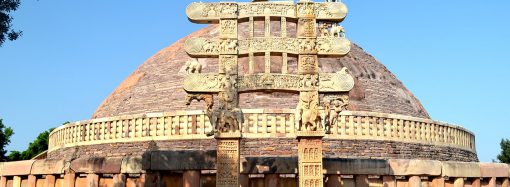
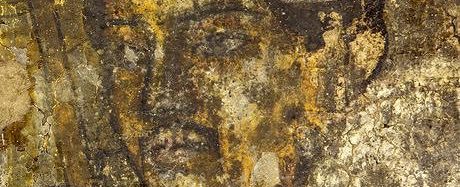
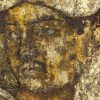
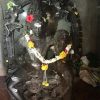
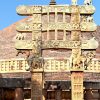

1 Comment
Dr. Shailesh Yagnik
December 3, 2021, 9:23 amDear Supriya,
I am Shailesh Yagnik from MICA.
After passing out from MICA and elevated yourself by going to the various academic institutions and corporates. I have seen your 8 papers and now you are completely concentrating on visiting sacred spaces to have feel of each place spiritual power and listening to your inner will for the new spiritual avenue created for yourself.
I am happy to see your profile after so many years. God Bless You. Regards, Shailesh Yagnik
REPLY